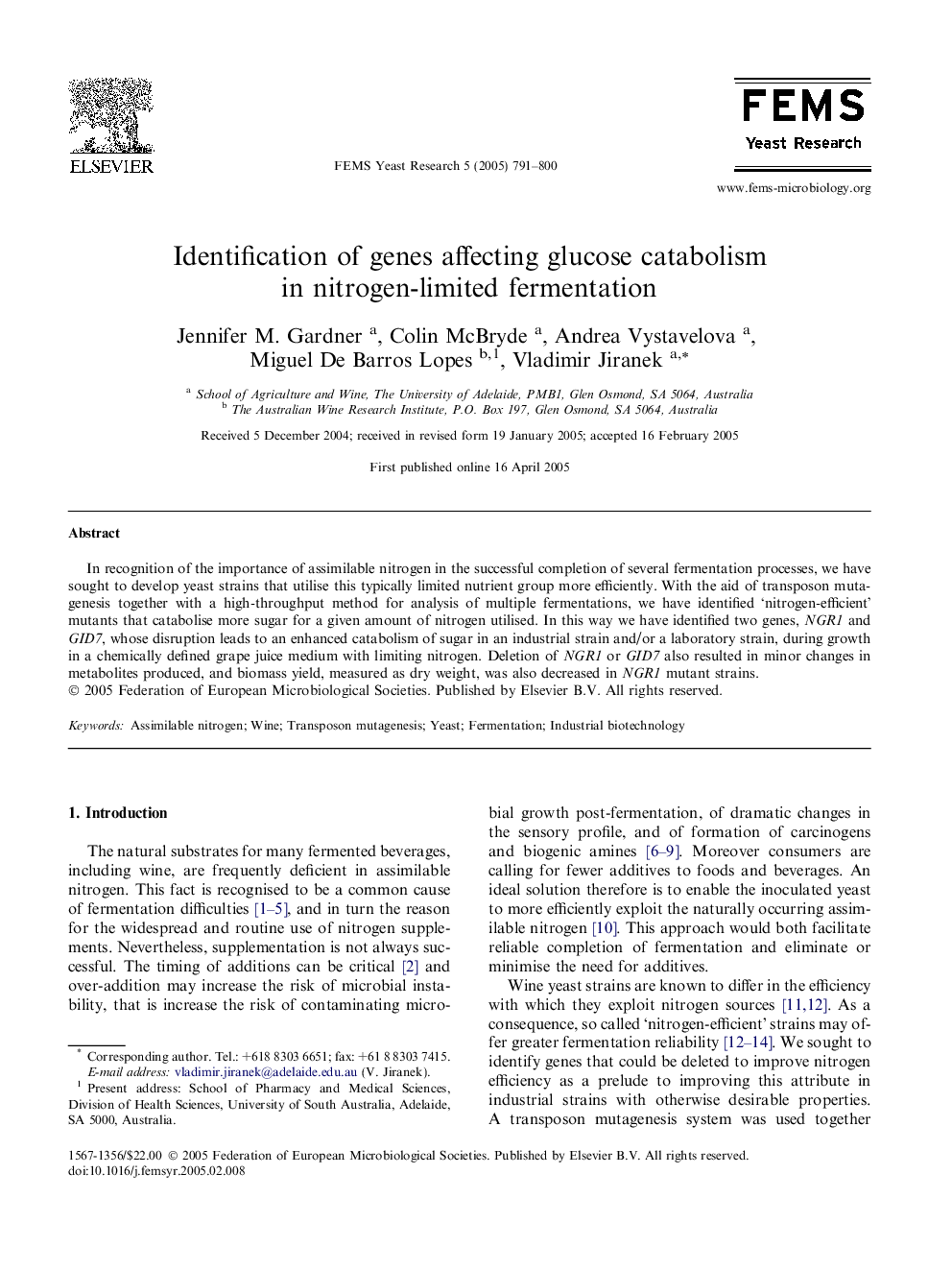| Article ID | Journal | Published Year | Pages | File Type |
|---|---|---|---|---|
| 9278912 | FEMS Yeast Research | 2005 | 10 Pages |
Abstract
In recognition of the importance of assimilable nitrogen in the successful completion of several fermentation processes, we have sought to develop yeast strains that utilise this typically limited nutrient group more efficiently. With the aid of transposon mutagenesis together with a high-throughput method for analysis of multiple fermentations, we have identified 'nitrogen-efficient' mutants that catabolise more sugar for a given amount of nitrogen utilised. In this way we have identified two genes, NGR1 and GID7, whose disruption leads to an enhanced catabolism of sugar in an industrial strain and/or a laboratory strain, during growth in a chemically defined grape juice medium with limiting nitrogen. Deletion of NGR1 or GID7 also resulted in minor changes in metabolites produced, and biomass yield, measured as dry weight, was also decreased in NGR1 mutant strains.
Related Topics
Life Sciences
Immunology and Microbiology
Applied Microbiology and Biotechnology
Authors
Jennifer M. Gardner, Colin McBryde, Andrea Vystavelova, Miguel De Barros Lopes, Vladimir Jiranek,
